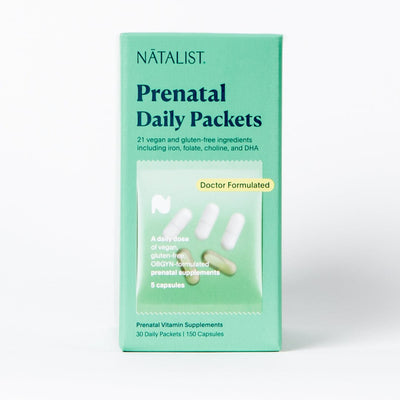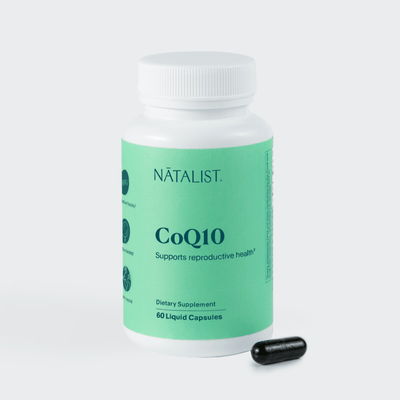5 Signs of Male Postpartum Depression

A large amount of new dads suffer from male postpartum depression and knowing the signs to look out for is crucial. Read on to learn the 5 signs of postpartum in men.
By OBGYN and fertility specialist Dr. Kenosha Gleaton
When we hear the term postpartum depression, most of us immediately assume the person affected is the one that gave birth. While it’s true that postpartum mood and anxiety disorders impact one in seven women, postpartum depression is also observed in about one in ten men.
What Is Postpartum Depression?
The period after birth is referred to as postpartum or postnatal. Postpartum depression (PPD) is defined as the occurrence of major depressive disorder occurring soon after the birth of a child. This is more often diagnosed in women that just gave birth, but can also occur in fathers. Postpartum depression is characterized by feelings of sadness, anxiety, and despair that can interfere with daily living. These feelings commonly begin weeks after birth, but can present over the course of a year and may last for months.
How is postpartum depression in men different from women?
So if paternal postpartum depression is a real thing, how different is it from maternal postpartum depression? Unfortunately there isn’t as much research on postpartum depression in men yet, but some studies have found interesting results.
Presentation and diagnostic criteria
In general, PPD is usually diagnosed using the most up to date version of the Diagnostic and Statistical Manual of Mental Disorders (DSM-5) for both sexes, however it can sometimes be more difficult to diagnose depression and anxiety in men, as they are more likely to be less expressive and under report symptoms. The Edinburgh Postnatal Depression Scale (EPDS) takes this into account by using a lower cutoff score for men. Still, the validity of this scale is limited by ambiguity and restricted detection of depression and anxiety symptoms in men. Other assessments exist such as the EPDS-Partner, PHQ-9, and others, which can be used at a provider’s discretion. Data is limited and mixed on the symptomatology of depressive symptoms in men versus women. Some data suggest no difference in symptoms while other studies observed differing symptoms in men including irritability, indecisiveness, and difficulty expressing emotion.
Incidence within three months of childbirth
A cohort study of 769 women and their partners was conducted to examine the differences in postpartum depression among sexes. The study found that the incidence of depression was higher among mothers (9.3%) at three months postpartum than it was in fathers (3.4%). Another study supports this notion and found that paternal PPD has the highest prevalence within months three to six postpartum, but may develop over a year. This differs from maternal onset of PPD which is most commonly seen about one to three weeks after childbirth. Overall, postpartum mood and anxiety disorders affect about 14% of women and PPD in about 8-10% of men.
How is postpartum depression the same for men and women?
Although there are some differences between paternal and maternal postpartum depression, there are also many similarities, including cause, symptoms, incidence, and more.
Incidence a year after childbirth
While some data on PPD incidence differs between men and women, there are also some similarities. A cohort study found that incidence of PPD was about the same among mothers and fathers about a year after childbirth. A meta-analysis has also shown that maternal depression during and after pregnancy is a strong predictor of paternal postpartum depression.
Cause
There are many reasons PPD may develop and causes are very similar for both men and women. Psychosocial and personal factors such as marital satisfaction and partner’s mental health were similar for both sexes when examined one year postpartum. Other common causes and risk factors of postpartum depression include a family history, a difficult pregnancy or birth, a change in lifestyle, changing hormone levels, and others.
5 Signs of postpartum depression in men
The signs and symptoms of postpartum depression can vary from person to person and aren’t always the same. Men are also less likely to be expressive when battling PPD, and symptoms may present differently. Research is split, as some state that PPD symptoms are similar regardless of sex, with others noticing key differences in PPD presentation amongst men and women. Here are some common signs of paternal postpartum depression:
1. Anger and irritability
Depression can show itself in many forms and sometimes can be disguised by anger, irritability, or frustration.
2. Hormonal changes
Both men and women experience hormonal changes following childbirth. It’s common to see a decrease in some men’s hormones such as testosterone, which has been linked to symptoms of depression in men. Low levels of estrogen, cortisol, vasopressin, and others may also be linked to depression or difficulties in bonding.
3. Detachment or sadness
More commonly associated with depression are feelings of sadness, despair, guilt, etc. Some research states women are more likely to become weepy, sad, or feel guilty compared to men, however these symptoms could arise in either sex.
4. Insomnia or hypersomnia
With a new baby in the house there is likely to be a change in sleep patterns for everyone, but remarkable insomnia or hypersomnia may be indicators of postpartum depression. Noticeable inability to sleep, or being extremely fatigued and sleeping more than normal unrelated to caring for a new baby could be symptoms.
5. Significant weight loss or weight gain
If not dieting or intentionally attempting to gain weight, a change of more than five percent of body weight in a month is considered a significant fluctuation. Decreased appetite could also be a sign of postpartum depression.
While these are some common symptoms, in order for a professional to diagnose someone with depression, there are specific criteria that must be met. The DSM-5 details the specific symptoms that must be present for a specific time period in order to diagnose depression.
This diagnostic criteria has only been defined for maternal postpartum depression, which is why
more studies and potentially different diagnostic criteria should be researched for diagnosing paternal postpartum depression. It’s important to note that symptoms can vary from person to person, and men are more likely to present symptoms differently. If you or someone close to you is experiencing these feelings or has had thoughts of death or suicide, you should seek out professional help. SAMHSA has a 24 hour helpline available and other resources are listed below.
Common risk factors
Postpartum depression can affect anyone, but there are some risk factors that could put someone at a higher risk of developing PPD. Risk factors include:
Personal and family history of mental illness
Previous struggles with depression, anxiety, or other mental illness personally or by a family member can put someone at an increased risk of PPD. Research also shows that men are more likely to develop PPD if the mother of their child experienced depression during or after pregnancy.
Marital dissatisfaction
Struggling in a marriage or relationship can fuel the stress and emotions already felt when adjusting to a new baby and cause a higher risk of developing PPD.
Lifestyle factors
Outside of welcoming a new baby into the home, there are other lifestyle factors that can cause anxiety, stress, sadness, and increase the risk of postpartum depression. Examples include employment changes, lack of support, a recent death of a loved one, and so on.
Poverty
The stress of poverty puts someone at a higher risk of developing postpartum depression, especially in those that are the main or sole financial provider for the family.
Emotional factors
Life is full of ups and downs and for many, big changes and life events can be a trigger for depression and anxiety. Pregnancy and childbirth can be a great example of this, regardless of if the pregnancy was planned or not. Adjusting to a new normal following the birth of a child can cause many emotions, especially if the pregnancy or childbirth was significantly stressful.
Hormonal imbalance
As previously mentioned, hormones do change in men and women during pregnancy and childbirth and have been linked to depression. If there is a hormonal imbalance present before childbirth, you may be at a higher risk of postpartum depression.
Ways to treat male postpartum depression
The most effective and recommended way to treat postpartum depression is to talk with a professional about psychotherapy and pharmacotherapy. Simply put, PPD could be treated using talk-therapy, medication, or a combination of the two. Depression can affect anyone at any time in life and should be taken seriously. There is little information on what therapies are most effective for men struggling with PPD, but we do know from a survey that most men would prefer individual or couples counseling to pharmacotherapy.
Different kinds of psychotherapy effective for managing depression include cognitive behavior therapy (CBT) and interpersonal therapy (IPT). Pharmacotherapy could include SSRIs, or selective serotonin reuptake inhibitors, which are recommended for many as first-line treatments for depression. SSRIs have been widely studied and are very effective for many.
Outside of therapy and medication from a professional, here are some other tips to promote self-care when struggling with postpartum depression:
-
Light therapy: There is a correlation between circadian rhythm disturbance and PPD, so the use of a light lamp could potentially help with PPD. A study on this treatment was found to be useful for some, although the study was small and only involved women.
-
Ask for support: Outside of professional help, your loved ones are there to support you and help you when you need it. If you need help with childcare, need someone to vent to, or just need some time to yourself to run an errand or relax, don’t be afraid to ask for support. As the saying goes, it takes a village!
-
Be kind to yourself: Having a newborn is hard, especially if it’s your first time. No one is a perfect parent and no one has all the answers. Lean on your partner, friends, and community and forgive yourself when things aren’t going perfectly.
-
Try a supplement: A huge part of self-care is fueling your body and maintaining important nutrients. There is some evidence that certain nutrients can help boost mood and reduce depressive symptoms. When combined with antidepressants, supplements such as omega-3, vitamin D, folate, and S-adenosylmethionine were found to reduce depressive symptoms. Shop products for male fertility, or read more about men’s fertility including the side effects of vasectomies, and what foods to eat to increase fertility on the Natalist blog.
Support Resources
Your doctor may know of some local support groups or resources for parents experiencing postpartum depression. You can also find useful resources and online support groups through the following:
Key Takeaways
-
Although many think postpartum depression only affects women, men can also suffer from PPD.
-
Men are more likely to develop depressive symptoms three months to a year after childbirth
-
Diagnosing postpartum depression in men may look different than diagnosing women, as men are more likely to underreport symptoms and depression can present differently
-
PPD is observed in about one in 10 men.
-
Risk factors for postpartum depression include hormonal imbalance, a history of mental illness, marital dissatisfaction, lifestyle and emotional changes, and more.
-
Common signs of paternal postpartum depression include insomnia and hypersomnia, weight gain or weight loss, anger and irritability, sadness and detachment, and others.
-
Symptoms of PPD vary from person to person, but should always be taken seriously.
-
The best treatment for PPD is often a combination of therapy and medication.
Sign up for 15% off your first order!
Insider access, exclusive deals, and OBGYN insights!
Reach Out, We're Here
Have questions about your order or products? For the speediest answer, check out our FAQ section. Need something else? Come find us below.
Customer Support
support@natalist.com
Press Inquiries
media@everlyhealth.com
Business & Partnerships
team@natalist.com
Affiliates + Influencers
team@natalist.com
Job Openings
Careers Page





















